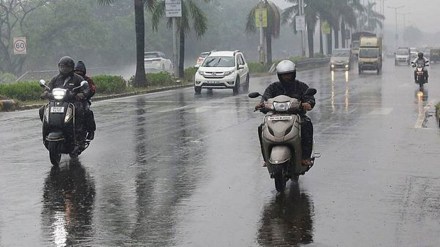Southwest monsoon rainfall during June-September is likely to be in the ‘normal’ range at 96% of the benchmark long-period average (LPA), the Indian Meteorological Department (IMD) said on Tuesday. Rainfall between 96-104% of the LPA is considered ‘normal’.
The official weather agency’s prediction comes as a relief to the farm sector, which relies on monsoon rainfall for crops grown in over a half of the net cultivated area. Key kharif crops like paddy, tur and soyabean are significantly rain-fed even now, though irrigation has improved significantly in the last two decades. The central and eastern parts of the country are more dependent on monsoon rains for crop cultivation.
The IMD’s forecast comes close on the heels of private weather forecasting agency Skymet’s statement on Monday that monsoon precipitation this year could be ‘below normal’ at 94% of the LPA.
If the IMD’s prediction holds true, the country would receive ‘normal’ or ‘above normal’ rainfall for five consecutive years. This is expected to give boost to sowing of kharif crops — paddy, tur, soybean and cotton — while also ensuring adequate soil moisture for rabi crops like wheat, mustard and chana.
Another positive factor is that the 146 reservoirs in the country now have water levels at a comfortable 21% above the 10-year average.
M Ravichandran, secretary, ministry of earth sciences, told media persons that the met department expects average rainfall during monsoon months to be at 83.5 cm against the LPA of 87 cm of average rainfall recorded between 1971-2020.
West Bengal, the biggest rice producing state in the country, has irrigation coverage of 51%, which may be impacted by deficient monsoon rains. Areas under pulses and oilseeds in Maharashtra, Madhya Pradesh and Karnataka also depend on monsoon in a big way.
The met department’s forecast is subject to a model error of +/-5%. It sees the probability of the country getting normal or excess rainfall in the range of 49-66%.
This is despite the El Nino conditions likely developing in July and impacting August-September rains.
Mrutyunjay Mohapatra, director general, IMD, told FE there was barely a one-to-one relation between El Nino and Indian summer rainfall. Of 15 El Nino years during 1951-2022, six saw normal to above normal rainfall. He said the Indian Ocean Dipole, another parameter which has an impact on the southwest monsoon, is expected to be positive.
“The negative impact of El Nino will be countered by positive Indian Ocean Dipole and low snow cover over the North Hemisphere and Eurasia that will ultimately result in a normal monsoon,” he said.
In terms of regional distribution of rainfall, the met department has forecast normal rainfall over peninsular India, adjoining east central India, east India, northeast India and northwest India while parts of west central India and northeast India are expected to received below normal precipitation during June-September period.
The met department will update its forecast in the last week of May.
IMD classifies ‘normal’ rainfall between 96% and 104% of LPA. Rainfall between 90%-95% is considered ‘below normal’ and precipitation below 90% of LPA is termed ‘deficient’. Rainfall received between 104%-110% of benchmark fall on ‘above normal’ category while volume of rainfall above 110% of LPA is refereed as ‘excess’.
“A monsoon forecast has to be viewed with some element of circumspection as its effects on both growth (demand) and inflation will become clear only post-October,” Madan Sabnavis, chief economist, Bank of Baroda, said.
Meanwhile, the monsoon and foodgrain data for the decade indicate that despite patchy and uneven performance of monsoon rains over the years, its impact on India’s foodgrain production has been marginal.
For instance, monsoon rains were 12% below the benchmark in 2014 while the foodgrain production in the 2014-15 crop year (July-June) declined 5% to 252 million tonne (MT) compared to the previous crop year.
In 2018, monsoon rains were 9% below the normal benchmark, the production of rice, wheat and pulses did not fall in the 2018-19 crop year compared to previous year.
